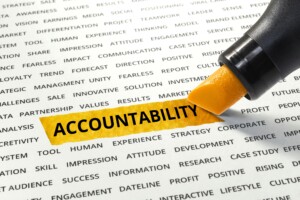During the several years leading up to the pandemic, remote work had already been gradually increasing in frequency. Then the pandemic forced most office-based employees to make the rapid adjustment to working from home. Now that more people have experienced remote work—and more companies realize that remote work is logistically feasible and can yield many bottom-line benefits (e.g., higher productivity, improved retention and recruitment)—it’s looking increasingly likely that a significant segment of the workforce will continue to work from home even after the pandemic. In fact, one recent survey by researchers at the Becker Friedman Institute for Economics at the University of Chicago found “that 22 percent of all full work days will be supplied from home after the pandemic ends, compared with just 5 percent before.”
What does this mean? In short, it means that working from home is going to be much more common after the pandemic than it was before. And it means that managers need to be prepared to lead in this new workplace reality—a role that includes holding their employees accountable for accomplishing projects.
The Meaning of Accountability
“Accountability breeds response-ability.”
—Stephen Covey
First, let’s define accountable. The folks at Dictionary.com say it means “subject to the obligation to report, explain, or justify something; responsible; answerable.” In the business world, a person who is accountable:
 internally assumes an obligation to complete a project or fulfill a task to which they have committed;
internally assumes an obligation to complete a project or fulfill a task to which they have committed;- assumes responsibility for finding a solution by working through problems rather than assigning blame elsewhere; and
- takes responsibility for their actions, stands by their word, and honors their commitments.
Accountability is a personal choice (an attitude, really) manifested in a person’s action to own issues and their outcomes. Being accountable means rejecting the “it’s not my job” mentality.
But let’s back things up: you can’t have accountability without first knowing what parameters define success (or failure). Therefore it’s critical that managers clearly identify their expectations and communicate them to their employees. That means explicitly defining tasks, establishing criteria for success, and determining how performance will be measured.
The Role of KPIs
“Setting goals is the first step in turning the invisible into the visible.”
—Tony Robbins
When everyone is physically located together in the office, managers can get away with being a bit “relaxed” or informal when distributing tasks and setting goals. (For example, a manager might assign a project to an employee while walking by their desk.) But because remote work makes such casual, ad hoc interactions pretty much impossible, it’s more important than ever that managers carefully detail and share their expectations with employees. That’s where key performance indicators (KPIs) come in.
KPIs help delineate employees’ tasks and goals. They also help structure managers’ check-ins with their employees by providing benchmarks against which performance can be measured. KPIs should define not only what is expected (that is, the quality of the deliverable), but also how and when the employee should submit the results of their work. KPIs should be so well-defined that the question “is this assignment on time and within specifications?” can be easily answered with either a yes or a no. By making it possible for employees and managers to define, measure, and evaluate employee performance, KPIs play a key role in enforcing accountability.

To further set your employees up for success, collaborate with each direct report to determine their KPIs. Discuss the expected result and ask for their input on how to achieve it (as well as how long the process will take). By including your employees in this conversation and taking into consideration their feedback and assessments of their own abilities, you can create a rubric that is more likely to define attainable goals for the employee and therefore has a positive impact on their accountability.
To assist in monitoring and assessing KPIs, create a system that tracks who from your staff is doing what and when that task is due. This is especially critical in a remote environment, which doesn’t facilitate frequent, casual, “on the fly” check-ins. Commit to regularly scheduled one-on-one meetings with each team member to ensure that they are fulfilling their obligations and making appropriate progress toward their desired outcomes.
As you determine KPIs, keep in mind what you can reasonably expect from your employees. If you ask too much of them, you are setting them up for failure—and it’s unfair to hold them accountable when you put them in the middle of a no-win scenario.
Coaching for Accountability
“An employee’s motivation is a direct result of the sum of
interactions with his or her manager.”
—Bob Nelson
Once KPIs are defined, managers can improve accountability by doing what they can to help their employees meet and achieve their goals. Just as your employees are accountable for their work, as a manager you, too, are accountable for your work: to provide them with the leadership, support, and direction they need to do their jobs.

To live up to the expectations of you as a manager, hold regularly scheduled one-on-one meetings with each team member.It’s critical that you honor these times, because constant rescheduling indicates to your employees that they are not a priority—and that can lead to a drop in their engagement and performance. Regular team meetings, too, can help motivate employees to be accountable for their work by requiring them to share with each other what they are working on and by providing a forum for public recognition of their great work.
Outside of scheduled formal meetings, regular “office hours” during which employees can drop by (water cooler style!) to ask you quick questions can help keep them on track. For example, I keep my 3 p.m. to 4 p.m. time slot totally open on weekdays, and during that time I’m readily accessible by phone, text, or IM to answer my employees’ questions. This practice helps employees get the information they need quickly (and cuts down on e-mail) so they can continue moving forward on their projects in a timely manner.
Other proven strategies for increasing accountability (and helping your employees be better positioned to succeed) are to give them more autonomy and ownership of their tasks and to be empathetic. Both of these approaches emphasize the positive aspects of accountability, making it seem more like a rewarding carrot than a punishing stick—and that can encourage your employees to strive for (and achieve) even better results at work.
(These are just a few ways to use coaching to help your employees achieve success and improve their accountability, especially in remote work environments. For more suggestions, check out one of my earlier posts, “Coaching from Afar.”)
Measuring Accountability
“Good performance accountability is about having a positive conversation between manager and employee. A manager is a coach and communicator, not command and controller.”
—Dave Ulrich
Ultimately, accountability is about getting work done. When goals and expectations are explicitly defined, measuring an employee’s efforts becomes easier. As you review an employee’s work, if the answer to “was the project completed on time and within specifications?” is a yes, chalk one up in the win category. If the answer is a no, then it’s time to dig into what went wrong.
I typically start this process by reviewing my part in this failure. First, I examine whether my expectations were crystal clear from the employee’s standpoint. To help avoid any misunderstandings, I make sure the employee and I are on the same page right from the start: after I assign a project, I have them walk me through what I’ve asked them to do. (Sometimes this reveals that I wasn’t as clear as I thought I was—which always garners a laugh!) Even after doing that, though, it’s still possible for miscommunication to lead to problems down the line.
Next, I review my schedule and determine if I was available enough to answer the employee’s questions and give them the coaching they needed to complete the project. If I find that my availability was lacking, then I know that I need to adjust my efforts in order to help my employee be more accountable.
 However, if it turns out that the clarity of my instructions and my availability didn’t contribute to the project’s failure, then it’s time to look at what happened on the employee’s end. This entails probing into where the employee got off track and what they will do to get the project back on the path to a successful completion, as well as taking note of lessons learned. During this process, I take great pains to avoid posing questions in an accusatory fashion; it’s not helpful to make someone feel defensive and backed into a corner. My goal is to identify options for moving forward, so I try to meet an employee where they are in their journey of accountability and then coach them to improve.
However, if it turns out that the clarity of my instructions and my availability didn’t contribute to the project’s failure, then it’s time to look at what happened on the employee’s end. This entails probing into where the employee got off track and what they will do to get the project back on the path to a successful completion, as well as taking note of lessons learned. During this process, I take great pains to avoid posing questions in an accusatory fashion; it’s not helpful to make someone feel defensive and backed into a corner. My goal is to identify options for moving forward, so I try to meet an employee where they are in their journey of accountability and then coach them to improve.
One strategy I’ve successfully employed to improve my employees’ accountability is to keep the view to a shorter timeframe than usual. Under “normal” circumstances, when teams are co-located, managers often establish monthly, quarterly, and yearly performance goals as well as targets for what “hitting it out of the park” looks like. Under today’s conditions, however, managers may need to dial it back and discuss goals in terms of this week, next week, and this month, with long-term planning usually going only as far as the end of each month or quarter. Not all employees need this shorter planning strategy, but I’ve found it particularly helpful for anyone who is struggling to meet expectations.
In addition to those methods for measuring success and accountability for project-type assignments, I also assess employee performance in several general areas in order to measuring improvements in accountability:
- Overcoming obstacles to accomplish tasks
- Implementing business-process improvements without being prompted
- Going above and beyond the position’s day-to-day requirements
- Improving customer satisfaction
- Completing tasks quicker
- Volunteering to assist other employees who may be struggling
At the same time, to measure my managers’ accountability to their direct reports, I also check how those managers are doing on certain leadership metrics:
- Reductions in the turnover (both involuntary and voluntary) rates of their employees
- Improvement in the feedback they receive via anonymous surveys of their employees
- Promotion rates of the employees in their department
- Transfer rates of their employees to other opportunities within the company
- Development plans in place for all of their employees
One final recommendation for measuring accountability: don’t lose sight of what people can handle, especially when they are trying to meet their goals under difficult circumstances (such as a pandemic!). Obviously you want your people to be productive and do the best work they can. And of course part of your role as a manager is to challenge your employees and nudge them to exceed their own expectations (particularly when you are confident in their ability to do so).
But “cracking the whip” to drive them in that direction won’t make you a good manager. In fact, it’s the kind of management strategy that can actually decrease productivity, damage employee morale, and drive workers away. A good manager recognizes that employees aren’t automatons who are simple cogs in a machine but individuals who each have their own challenges. So be ready and willing to change up your leadership game plan to meet your employees’ needs.
Final Thoughts
“It is the leaders’ job to create an environment where
maximum performance is possible.”
—Rob Burn
Yes, maintaining accountability can be a challenging task. Being geographically dispersed makes check-ins more difficult—but not i mpossible, thanks to high-speed Internet, video conferencing, and other communication tools. If you define expectations clearly, give the support and coaching your employees need to succeed, and provide oversight to keep everything on track, your team should have no problems with accountability!
mpossible, thanks to high-speed Internet, video conferencing, and other communication tools. If you define expectations clearly, give the support and coaching your employees need to succeed, and provide oversight to keep everything on track, your team should have no problems with accountability!
